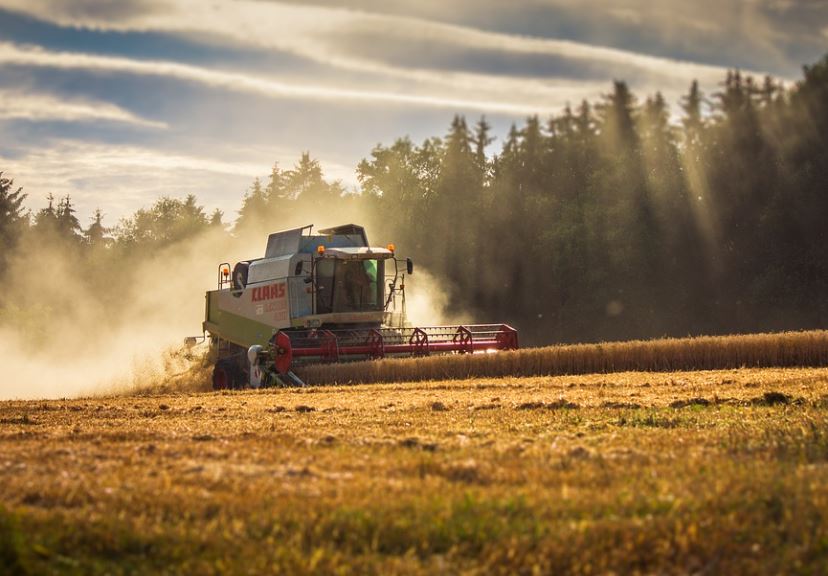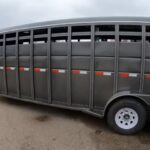When you work on a farm and have done everything to make sure your crops are ready, you need to prepare for the harvest season. You’ll need the equipment at this critical time, and that undoubtedly includes a combine harvester. So today, we’ll be sharing with you how to do a combined work and their vital function.
A combine harvester is also known as a combine; it’s a versatile machine that streamlines the harvesting process and helps farmers make the most of their crops. Hence every farmer needs to get their hands in the best combine they can find.
As you can see, a combine can be an essential addition to your machinery set, particularly if your farm exceeds a specific size and focuses on certain crops. Continue reading to discover everything you need to know about how a combine works and more.
Combine Brief History
The first combine harvester, which was capable of reaping, threshing, and winnowing cereal grain, was invented by Hiram Moore in 1835. Since then, the combine harvester has had a long and exciting history of advancements and improvements.
The invention of the McCormick reaper by Cyrus Hall McCormick in 1831 was a technological breakthrough.
The combine harvester because more prevalent in the 1930s when farmers began to attach them to tractors. In the 1940s, the self-propelled model was created and could cut areas more expansive areas.
One of the most important technology developments for combine harvesters was the integration of a continuously variable transmission (CVT). CVTs enable the combine to vary its ground speed while maintaining a constant engine and threshing speed.
How Does a Combine Work FAQ’s
What do you do in a combine?
The combine, short for combine harvester, is an essential and complex machine designed to harvest mass quantities of grain efficiently. Modern combines can cut a swath through a field more than 40 feet wide. The name comes from combining three essential harvest functions; reaping, threshing and winnowing.
Why are combines so big?
One important factor was the development of huge, automated machines such as combine harvesters that made each agricultural worker vastly more productive. You can see how wide the header (a front cutting mechanism) is compared to the main body of the machine. The biggest combines have headers about 12m (40 ft) wide.
How does a combine separate corn?
Combines have row dividers that pick up the corn stalks as the combine moves through the field. The corn ears are broken off from the corn stalk and dragged into the combine, and the stalks are dropped back on the ground. A machine separates the husks, kernels, and cob inside the combine.
What comes out the back of combine?
Straw is carried out through the rear of the machine, and weed seeds and crop seeds, along with chaff, fall into the second sieve. At the end of the process, the straw falls out of the back of the combine.
How does a combine work?
- Combine harvesters are huge and complex machines that contain many different moving parts and stages. The combine header cuts and gathers the crops from the field. The crops then enter the belly of the combine and undergo several processes to separate the grain from everything else (stalk, etc.). This separation process is where the old saying “separate the wheat from the chaff” originated; the process separates valuable contents (grains) from everything else.
- After the separation process has taken place, the grain is moved into the grain tank, and the remaining leftover parts are discharged through the rear of the machine and back into the field. The farmer may then choose to bale the discharge later or let the discharge decompose naturally and provide nourishment to the soil.
- Combines can unload their grain tanks while moving, saving farmers a lot of time. Typically a tractor pulling a grain cart will drive alongside the combine while the combine continues harvesting, and then the combine’s grain auger extends over the grain cart and empties the grain tank into the grain cart.
What are the different types of the combine?
Control Combine Harvester
This type of combine harvester is also called a tractor pull combine. You may also hear a pull-type harvesting combine or a tractor combine. As these names imply, this type of combine does not move forward under its own power.
Self-Propelled Combine Harvester
This type of combine harvester is most popular and most often used in today’s modern farm. This all-in-one variety of combine powers itself with its own attached engine. The engine performs two functions, powering the machine and powering all of the operations related to harvesting. Self-propelled combine harvesters come in two varieties:
- A conventional combine harvester is made up mainly of the machine’s threshing system and straw walkers.
- Axial flow or rotary combine harvester mainly consists of the axial flow threshing system. This is the most popular type of self-propelled combine harvester.
What are the different components of a combine?
- Header. This part of the machine cuts through the stalk of a plant right next to the ground. It then moves the plant through the machine. There are different headers for different crops.
- Spinning augers and conveyors. These parts work together to move the cut plants toward the machine’s center.
- Thresher. This part beats or threshes the cut plants to shake the grains off the stalks.
- Grain tank. Conveyors move the separated grain into the grain tank for holding. Other conveyors move the chaff in a different direction to be blown out the rear of the machine.
- Elevator and unloader. Once the grain tank is full, the elevator carries the grain up to the unloader, where it is shot into a grain cart.
- Straw chopper. As the residue is blown out the back of the machine, it is passed through the straw chopper to reduce the debris size and make it uniform and manageable.
What are the different types of combine heads?
Different types of combine heads can be interchanged depending on the type of grain you are harvesting.
Standard Header
This is also called the grain platform or the platform header. This type of header has a reciprocating knife cutter bar and a revolving reel with plastic or metal teeth that cause the cut crop to fall onto the head. At this point, an across auger is used to pull the crop into the machine’s throat.
Wheat Header
This is a similar header type, but the reel doesn’t have teeth. Wheat headers are also called draper headers because they use rubber or fabric aprons in the place of the cross auger.
The grain is more quickly fed through the draper header than do cross augers. This results in more grain being put through the machine and a higher yield.
Dummy Heads
These are also known as pickup headers. This type of header is used for crops that have been precut and placed into swathes or windrows. This type of header is most frequently used in Canada and other new northern locations.
Corn Header
It’s possible to use a standard grain header for corn, but a specialized corn header results in reduced waste. This type of header has snap rolls that are specially designed for stripping the leaves and stalk from the ear. This type of point may also be seen in row crop heads used to harvest small grains. The points help reduce the amount of weed seed that is picked up during harvesting. Speaking of corn, what do you know about a corn harvester?
What is Side-Hill Leveling?
This type of technology is used to level the machinery when operating on a steep hillside. This is a good thing because, without it, the machine would lean and cause both the grain and the chaff to slide to one side and be ejected together in a big ball rather than being efficiently separated.
Additionally, side-hill leveling has a safety aspect that prevents heavy machinery from tipping.
How is the process of threshing done?
- The header cuts the crop and feeds it through the threshing cylinder.
- Following this, rub bars or moving rasp bars continue to pull the crop through concave grates separating the chaff and straw from the grain.
- Grain heads then fall through fixed concaves and onto sieves. The straw is sent out over the top of the concave onto straw walkers.
- Straw is carried out through the rear of the machine, and weed seeds and crop seeds, along with chaff, fall into the second sieve.
- At this point, both crop seeds and chaff fall through and are blown off by a fan. The crop is then carried into the elevator and onto the hopper.
- As straw is blown out the back of the machine, heavier materials (e.g., on threshed heads) fall off the front of the sieves and go back through the concave to be re-threshed.
- At the end of the process, the straw falls out of the back of the combine. At this point, it may be bailed up and used for cattle bedding, or it may be spread out over the ground using rotating straw spreaders to mulch and nourish the soil.
What is the average cost of a combine?
It can be expensive to purchase a combine if you are buying new. A new combine may set you back anywhere between $330,000 and $500,000, but a used combine may only cost between $5,900 and $450,000. On average, a used machine should be priced at around $122,200.
Combine Options
S760 Combine
Designed for performance in coarse grain crops, the TriStream rotor and Dyna-Flo Plus cleaning shoe efficiently thresh and clean grain in tough harvesting conditions.
The TriStream rotor helps maximize fuel efficiency with technology that reduces the force required to move material through the combine by as much as 20 percent.
High capacity starts at the feeder house, where the S Series provides large areas of clearance for high volumes of the crop to flow uninterrupted.
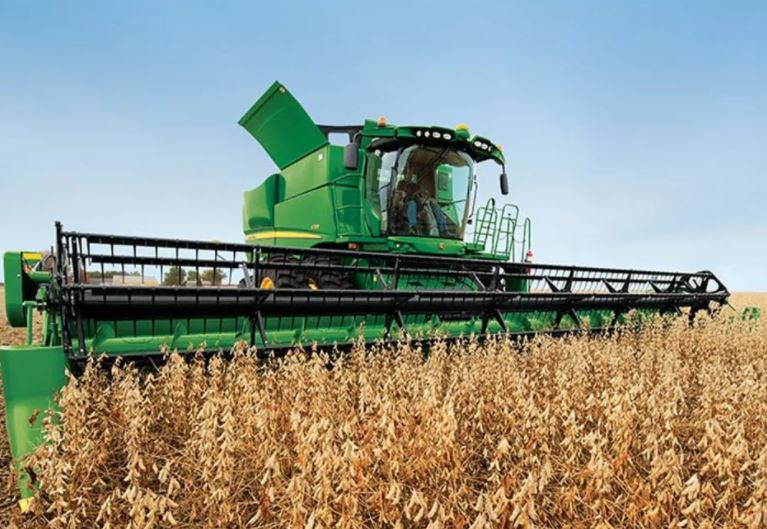
Features:
- Fully automated yield sensor
- Raise your capacity in tough small grains or rice
- More convenience from the cab
S770 Combine
A slightly tapered front nose dramatically reduces the growling with thick crops and heavy rotor loads. Spiral vanes around the rotor guide the crop material through the feeding and threshing area, reducing hesitation and improving productivity.
Meanwhile, rifling grooves on the elements allow the bullet-shaped rotors to move large volumes of crop material through the rotor more efficiently.
Rifled elements grip crop material, providing a pulling action that helps even the crop flow, allowing the rotor to deliver better threshing performance.
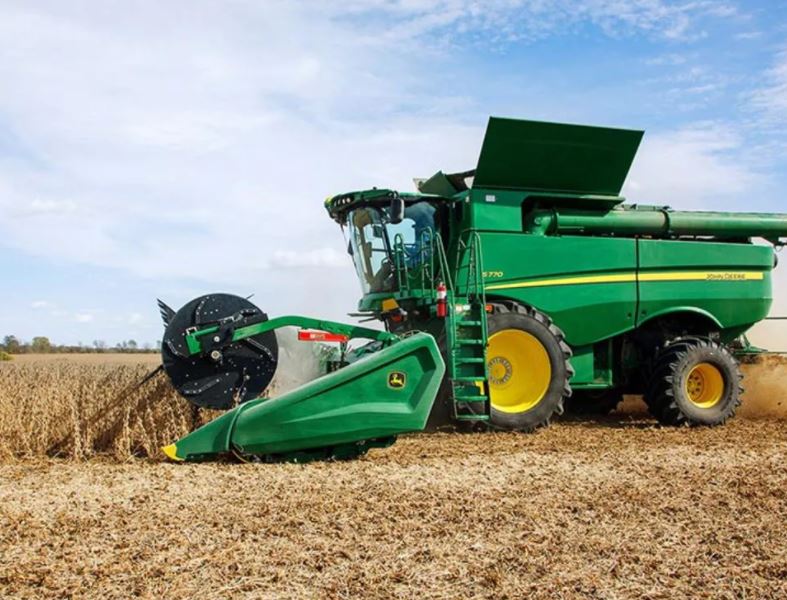
Features:
- TriStream rotor
- Maximizes uptime and productivity
S780 Combine
Consider your capacity needs to be met. In fact, in shoe-limited conditions, you get 10 percent more capacity in corn than previous models, which equates to another 0.6 ha/hr (1.5 acre/hr).
The key is uniform distribution and a unique two-stage pre-cleaning design. Four conveyor augers move material onto the shoe steadily and evenly, even on hillsides.
A fixed front chaffer helps thin the crop mat; about 30 percent of the air goes to the front chaffer at high speed, allowing it to clean up to 40 percent of the free grain before it reaches the main chaffer.

Features:
- High-capacity harvesting in corn and beans
- Designed for efficiency
- Designed for productivity
S790 Combine
John Deere S Series Combines set new capacity standards with four crucial components: Active Concave Isolation, a high-performance feeder house, heavy-duty interrupter grates with integrated interrupters, and the variable-stream rotor.
When you’re looking at a storm on the radar and don’t have time to spare, you can run full throttle and still put your toughest crop into the machine without any issues.
The industry-exclusive variable-stream rotor features a more extended, tapered front cone design that excels in wet, green rice or small grains where the straw is especially tough.
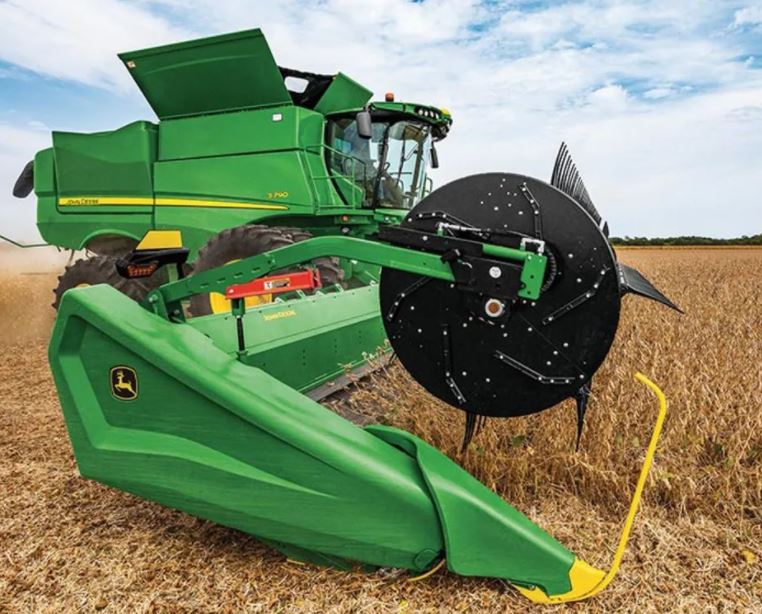
Features:
- Harvest through the most challenging conditions
- Better material handling
- Designed for comfort

